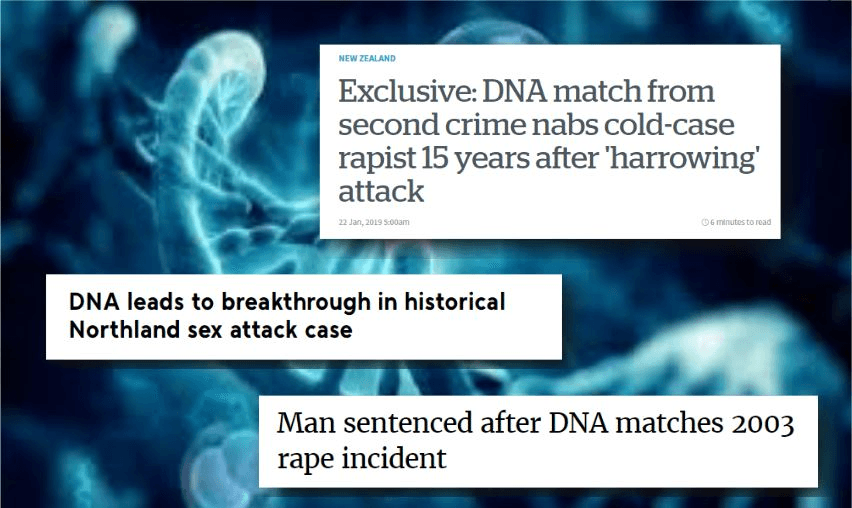Increasingly sophisticated analysis of samples means perpetrators from historic cases can be identified – and the technology is just as important in proving accused people’s innocence, writes ESR’s Sarah Cockerton
The ability to use DNA to secure a conviction in an historical crime has made headlines recently with the sentencing of a man in Auckland over a horrific rape case from 2003.
Historical crimes such as this can be solved through the use of the New Zealand DNA Databank, which is administered by Institute of Environmental Science and Research (ESR).
Since it was created in 1996, the databank has helped in the investigation and resolution of thousands of crimes including historical cases.
New Zealand leads the world in DNA matching, with 70% of samples loaded on the case sample database successfully linking individuals, and 30% linking to another crime.
At the time it was implemented it was only the second DNA databank in the world, after the United Kingdom, to develop such a powerful crime-fighting tool.
The databank is made up of two databases, DNA profiles of individuals, and samples taken from crimes scenes.
ESR now holds more than 190,000 DNA profiles from individuals and more than 40,000 DNA profiles from crime samples.
In an investigation, the databank is used to search profiles obtained from crime scene samples against the DNA profiles on record to identify any links between individuals and crimes. The profiles are also compared against each other to identify any crimes that are linked. This comparison process occurs every day and new DNA profiles are compared to those already on the databank.
Advances in techniques used to get usable DNA material from crime samples have developed dramatically in the more than 20 years the databank has been operating.
In the past, crime samples had to contain a large amount of a body fluid, such as blood, semen or saliva.
New techniques and increased sensitivity of the analysis have allowed for DNA profiles to be obtained from crime samples where previously it would not have been possible. DNA profiles can now be obtained from a much broader range of samples and from much smaller amounts of a body fluid. For example, it is now possible to obtain a DNA profile from skin cells left on a touched item at a scene. Some of the more unusual types of crime samples that ESR has obtained DNA profiles from have been ear wax, partially eaten food, vomit and a sample taken from a deodorant roll.
ESR undertakes a range of research and is continually applying the latest advances in DNA technology to stay at the leading edge of crime science.
Not only are these advancements beneficial for the investigation of current cases, but also for unsolved historical cases. Crime samples for such cases can be re-analysed using new technology in an attempt to obtain DNA profiles for comparison to profiles on the databank.
The information is equally important in proving accused people’s innocence as it is for proving their guilt.
The science has advanced so much that nowadays it is even possible to isolate and separate certain cell types from a mixture of cells contained within a crime sample. This cell separation is especially useful for sexual assault cases where the crime sample is a semen stain containing small numbers of sperm among a large number of other cells. Obtaining a DNA profile from the sperm cells alone and subsequent comparison to the databank may be critical to an investigation.
Because of the increased sensitivity of DNA analysis, it is not unusual for the DNA of more than one person to be found on a crime sample. The interpretation of profiles that contain DNA from more than one person, is crucial. ESR leads the world in resolving DNA mixtures and our comprehensive knowledge of the presence and interpretation of DNA is utilised across the country and around the world.
Mixtures of DNA that were previously unresolvable, meaning the DNA profile of each individual in the mix could not be determined, are now able to be resolved. This means that more information can now be obtained from these crime scene samples and entered on to the databank.
The importance of continued research that underpins the science cannot be overestimated, We’re determined that our laboratory, and the impact it can have in criminal justice, should remain at the forefront of technology.

